When the ethnic cleansing of millions of Palestinians throughout the years of occupation imposed by the only democracy in the Middle East, “Israel”, and the inhumane actions of mass killings and rape of land is enough to make your blood boil, one more thing can be added to multiply the amount of steam coming out of your ears: the cleansing of Palestinian culture.
In Palestinian tradition, el keffiyeh has been used as headdress by men. The cotton material and texture was mainly used to keep out the heavy dust and sand, and for farmers to keep their heads cool as they plowed in their fields. The checkered pattern was said to refer to many things: a fishing net, a honeycomb, the joining of hands, or the marks of dirt and sweat wiped off a worker’s brow.
During the Palestinian Revolt in the 1930’s, Palestinians wore the keffiyeh as a symbol of nationalism and resistance against increasing British rule and Zionist settler-colonialism. It was then adopted by late Palestinian leader Yasser Arafat in the 1960’s, and continues until this day to be our traditional symbol of resistance, our Palestine worn around our necks.
The black-and white keffiyeh has been sometimes referred to as the “unofficial” flag of Palestine. Sadly, in our contemporary times and due to the schism between political parties Fateh and Hamas, many have began to associate the black-and-white koffiyeh with Fatah and the red-and-white keffiyeh with Hamas (historically, the red-and-white keffiyeh was associated with Jabha, or the PFLP.) This association has not been accepted by many other Palestinians, who believe that el keffiyeh is for the whole of Palestine by Palestine. Yet in many cases, you cannot take a few steps outside your home whilst wearing a keffiyeh without a worthless deadbeat singing, “Fathhawy, Fathhawy!”
I vividly remember walking in Ramallah on the 15th of May (Al Nakba commemoration day) earlier this year, wearing a FREE PALESTINE T-shirt. My sister was wearing a koffiyeh. Almost everyone that walked past us would smirk and say sarcastically, “Oh, she wants to liberate Palestine!”
The lack of realization of our lives under occupation made by the majority of Palestinians has made them careless about what el keffiyeh means to the world. This has made it an easy target for our keffiyeh to be worn as a fashion accessory (spit!) throughout Japan, America and most of Europe. Many, if not all wearers of this garb for fashion reasons are completely ignorant of a keffiyeh’s true meaning. Of course, “Israel” has even started to rebrand el keffiyeh as its own, despite referring to it once upon a time as “terrorist” symbolism. Ironically, it fits with “Israel” under that account.
Those who believe they understand the true symbolism of el keffiyeh have branded it as being “anti-Semitic” and a “political statement supportive of Islamic terrorism against Israel”. Little do they know that the only democracy in the Middle East uses every means of psychological warfare as a weapon to disrupt history and culture, sadly not only affecting the world but the occupied Palestinians, too!
When the colored keffiyeh became the newest fashion trend, Palestine looked like a kaleidoscope of ignorance. People of all ages began to wear this worthless piece of cloth around their necks and strut with a new found confidence to comments like “I like your scarf” or “OhmyGod where did you get it it’s soooo cute”. The markets were flooded with these despicable meaningless accessories, and an underground call to boycott was soon commenced by the more aware. Yet until this day, the occasional vulgar pink or blue “keffiyeh” can be seen worn on a Palestinian who would rather use it to match their shoes or purse than acknowledge its true meaning. Since colored keffiyehs are no longer the latest fashion trend in the market, supply has radically decreased this year in comparison to earlier years. Business is business, right?
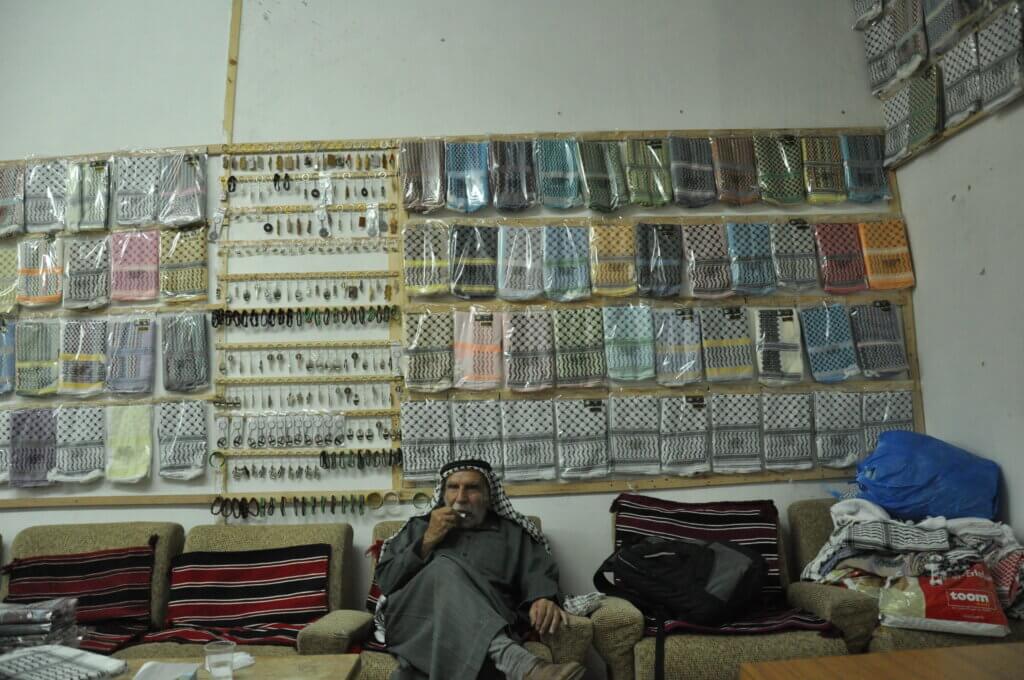
Herbawi Textile Factory, located in Hebron, Palestine, is the only producer of the original keffiyeh in all of Palestine. The factory was founded in 1961 by Yasser Herbawi. Yasser is now almost 80 years old but still makes it to the factory every morning. He has made it his duty to hand the factory over to his sons Izzat and Judeh and a family friend, Abid Keraki, and promises that the factory will always remain family-run. “It’s [el keffiyeh] our past, our future…it means everything,” he says.
The irony of the situation is that while the keffiyeh’s popularity is increasing, the factory’s sales have decreased dramatically. Due to cheaper and inferior imports from China, the factory’s sales are dropping by half of what they originally sold. Following the Oslo accords, these foreign imports have been flooding markets since the 1990’s. 70% of the Herbawi Textile Factory’s sales are made from the original black-and-white keffiyehs, and colored ones are being sold just as a fashion accessory to keep the factory running.
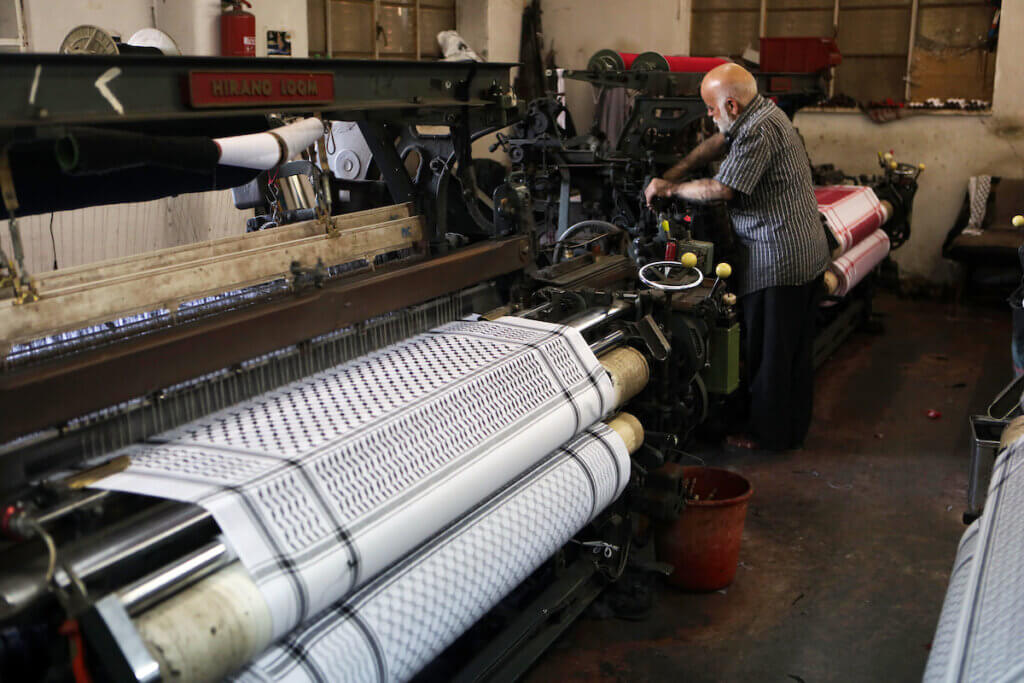
The factory’s looms are very complex machines, so complex that it took the Yasser’s sons more than five years to fully comprehend the looms. The factory once had fifteen looms working, but now only eight are used and not all are needed full-time. Unfortunately, Izzat Herbawi doesn’t object to the modern commercialism of the keffiyeh. However, he stated that “the keffiyeh is a tradition of Palestine and it should be made in Palestine. We should be the ones making it.”
The factory is “the only and the last” to produce the keffiyeh in Palestine. Thanks to a true Palestinian from Hebron, who started a business at the age of 33 to ensure that our symbol of resistance, our culture, would continue to exist throughout many years to come. Hopefully the old will die but only after enlightening the young, and may we continue to literally wear our pride around our necks as Palestinians. May we continue to defy the occupiers, who believe that mutating our culture erases us from existence.
This post originally appeared on the blog Written Resistance.
Mariam Barghouti
Mariam Barghouti is a translator and journalist based in Ramallah.
Deema Al-Saafin
Deema Al-Saafin is from both Gaza and West Bank, and is a graduate of Birzeit University.
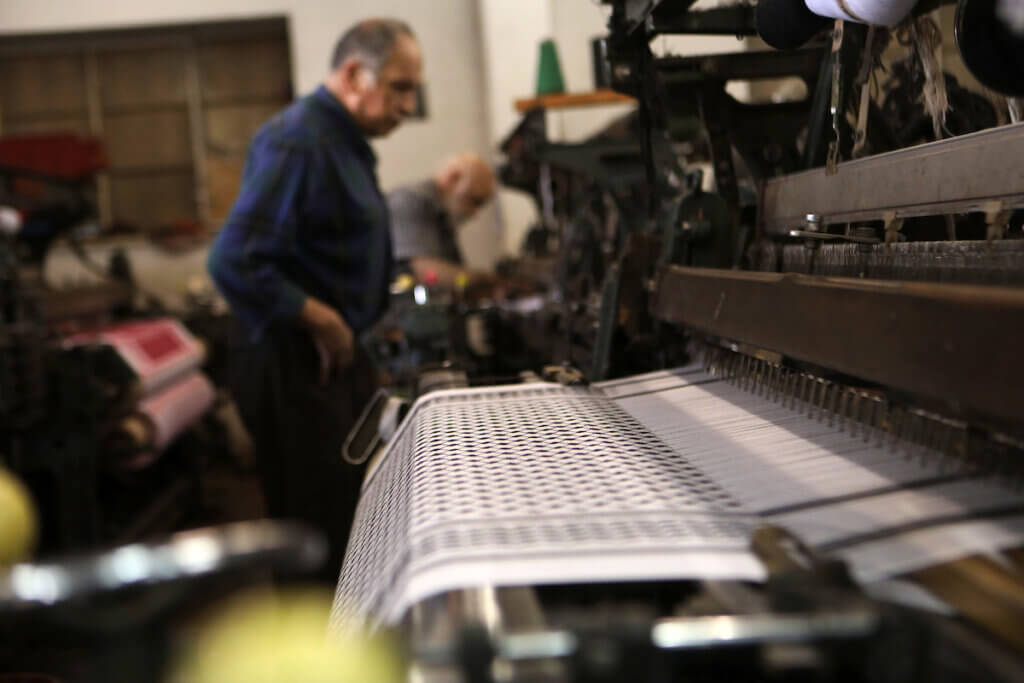
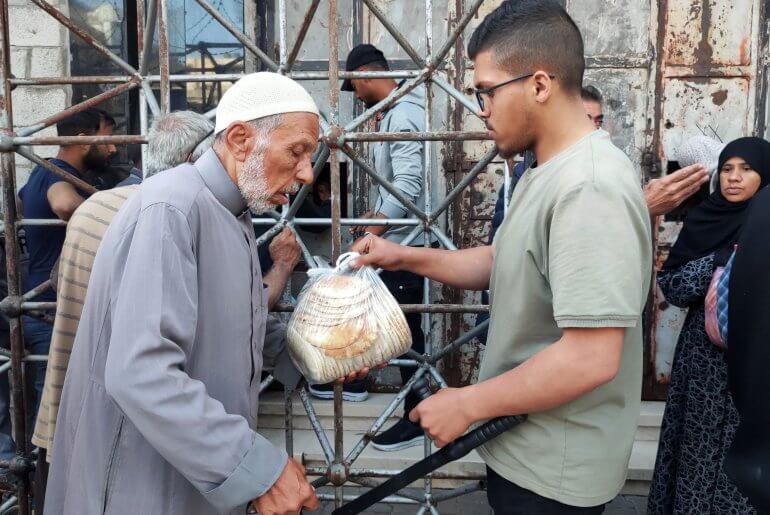
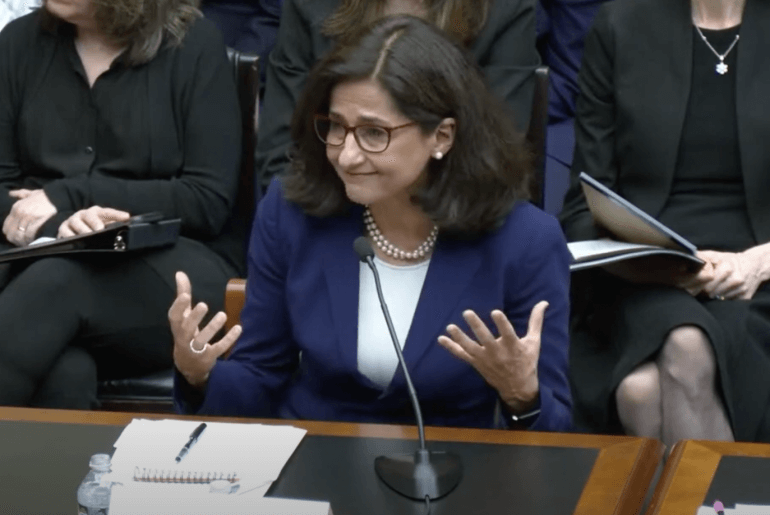
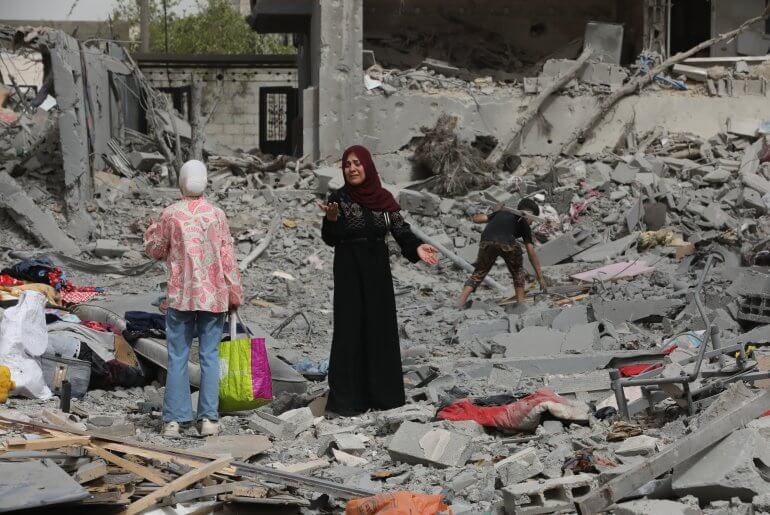
You can order koffiyeh from the Herbawi factory (and a host of other great stuff) from http://www.PalestineOnlineStore.com/
Someone should get Unesco involved and get a design registration organised so that official koffiyehs can only be made in Palestine.
This post would not be complete without this great performance of “Koffieyh Arabiya” by the first lady of Arabic hip hop, Shadia Mansour.
Enjoy.
For Annie – Shadia Mansour in Rolling Stone recently.
So I clicked the link to check out the store and I saw olives. I love Olives. Anyone ever had any Olives from Palestine?
I don’t even know where the heck the olives I eat are from, I would assume Italy